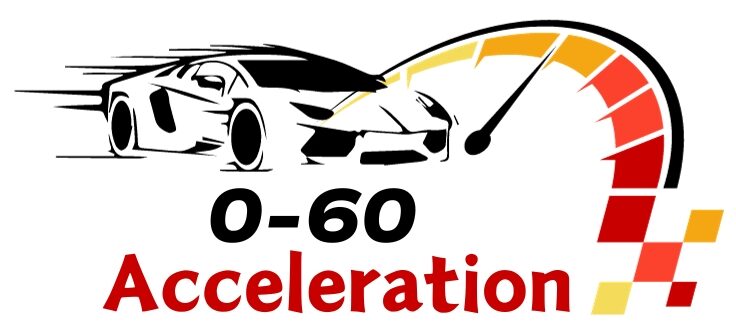
Cheetahs are renowned for being the fastest land animals on the planet. But just how fast is a cheetah from 0 to 60 mph? The answer will leave you astounded – cheetahs can accelerate from a standstill to 60 mph (96.6 km/h) in an almost unbelievable 3 seconds flat.
In this today article, we’ll look at the crazy acceleration of cheetahs from 0 to 60 mph. We’ll find out the exact mind-blowing numbers behind their acceleration abilities. We’ll also explore why evolution gave cheetahs such extreme speed for chasing prey. Plus, we’ll uncover the special biological features that allow cheetahs to accelerate so rapidly. Get ready to learn the secrets that make cheetahs nature’s ultimate masters of acceleration!
Cheetahs’ 0-60 MPH Acceleration in Numbers
0 to 60 MPH in Just 3 Seconds
Let’s put the cheetah’s 0 to 60 mph acceleration into perspective. Multiple reputable sources, including National Geographic and Encyclopaedia Britannica, confirm that a cheetah can go from a complete standstill to 60 mph (96.6 km/h) in merely 3 seconds.
To grasp how ludicrously fast that is, consider this: The Ferrari Enzo, one of the world’s most powerful production cars, takes 3.3 seconds to reach 97 km/h (60 mph) from a standstill. Somehow, the cheetah outpaces even such an engineering marvel when it comes to pure acceleration.
Around 40 MPH in 3 Strides
Incredibly, the cheetah’s acceleration is so explosive that it can reach around 40 mph (64 km/h) in just 3 strides from a stationary start. Let that sink in for a moment.
If this acceleration capability were scaled up to a human, it would be equivalent to a person going from 0 to 1,300 mph (2,092 km/h) in those same 3 seconds! The cheetah’s acceleration truly defies belief.
Evolution’s Need for Extreme Speed

Predator Adaptations for the Chase
As a predator, the cheetah’s survival hinges on its ability to chase down prey at rapid speeds over short distances. Its main prey includes blazingly fast animals like gazelles and wildebeests, which can reach top speeds of 55-60 mph themselves when evading predators.
Evolving the capability to rapidly accelerate to extremes was essential for cheetahs. Even a small head start for the prey could mean the difference between a successful hunt and going hungry for the big cat.
Built for Unrivaled Acceleration
Through eons of evolutionary pressures, the cheetah’s body has become optimized as an acceleration machine. Several distinct physical traits contribute to enabling their breathtaking 0 to 60 mph burst:
- Lightweight, streamlined body to minimize air resistance
- Small, aerodynamic head to slice through the air
- Long, thin legs and a flexible spine for maximizing stride length
- Huge lungs, heart, and nasal passages for rapid air intake
- Light, hollow bones to keep overall weight down
The cheetah is quite literally built from the ground up for achieving supreme accelerating power over short distances.
The Science Behind a Cheetah’s Rapid Acceleration
Massive Muscle Power
At the core of the cheetah’s acceleration prowess lies its specialized muscular system. The big cat’s muscles are composed primarily of extremely fast-twitch muscle fibers.
These fibers can contract and extend with incredible speed and power, allowing the cheetah to rapidly build up momentum from a standstill. Additionally, the large nasal chambers and lung capacity enable the muscles to be supplied with vast quantities of oxygen during the acceleration phase.
Biomechanics of the Cheetah Stride
Beyond just raw muscle power, the biomechanics of how a cheetah moves its body during acceleration are also finely tuned. The hind legs are disproportionately long compared to the front legs.
This elongated hindquarter design allows the cheetah’s back legs to generate immense propulsive force with each stride. The flexible spine further enables the cheetah to extend its stride length to the absolute maximum during acceleration.
By combining the strengths of its muscular system and stride mechanics, the cheetah can rapidly build up its speed from 0 to 60 mph and beyond in mere seconds.
Limits to a Cheetah’s Top Speed

Short Sprinting Capacity
As extraordinary as the cheetah’s 0 to 60 mph acceleration is, it unfortunately cannot maintain such extreme speeds for long. A cheetah can only sprint at top speed for around 20-30 seconds before being forced to slow down.
The combination of intense muscle strain from the acceleration, potential overheating, and the lightweight body design not being optimal for endurance all limit the duration of the cheetah’s top speed capability.
Trade-off Between Acceleration and Top Speed
There is an innate trade-off that exists between optimizing for extreme acceleration and achieving sustained top speeds. The very traits that enable the cheetah’s otherworldly 0 to 60 mph times, like its lean body and lightweight construction, are what prevent it from reaching even higher top speeds.
In contrast, animals built more powerfully like the pronghorn antelope sacrifice a bit of acceleration for higher overall top speeds that can be maintained longer. Every evolutionary adaptation involves compromises based on an animal’s particular needs.
Seeing a Cheetah’s Acceleration in Action
While numbers and scientific explanations help illustrate the cheetah’s amazing acceleration capabilities, nothing quite captures the visual thrill of seeing it happen in real life. Numerous wildlife documentaries showcase cheetah hunts in excruciating slow motion detail.
Some zoos and conservation efforts have even strapped video cameras onto cheetahs, providing an eye-opening first-person perspective into their explosive acceleration from 0 to 60 mph and beyond as they chase prey. Seeing that burst of speed up close is simply breathtaking.
Conservation Efforts for the Cheetah
Despite being exquisitely adapted for speed, cheetah populations have dwindled dramatically over the last century. It’s estimated that only around 7,000-10,000 cheetahs remain in the wild across parts of Africa and Iran.
The cheetah’s very existence is threatened by human conflict, habitat loss, and other factors. Conserving this unique creature and its incredible evolutionary traits like extreme acceleration is of paramount importance.
By supporting organizations like the Cheetah Conservation Fund and spreading awareness, you can play a vital role in ensuring the long-term survival of the world’s fastest land animal in its natural habitats.
Conclusion
There is no doubt the cheetah deserves its reputation as the absolute acceleration king of the animal kingdom. Its ability to go from 0 to 60 mph (96.6 km/h) in an outrageous 3 seconds flat is an extraordinary evolutionary feat unmatched by any other land animal.
From its explosive muscular power to its specialized stride biomechanics optimized for acceleration, the cheetah’s body is purpose-built for achieving ludicrously quick bursts of speed to aid in the chase. While limited in duration, that fleeting window of extreme quickness is often all the cheetah needs to run down its prey.
We must strive to ensure this incredible natural marvel of speed isn’t lost forever. While the technology of our fastest supercars may continue advancing, nothing compares to the organic acceleration brilliance evolved over eons and embodied by the regal cheetah. Let’s cherish and protect nature’s ultimate speed machine!






